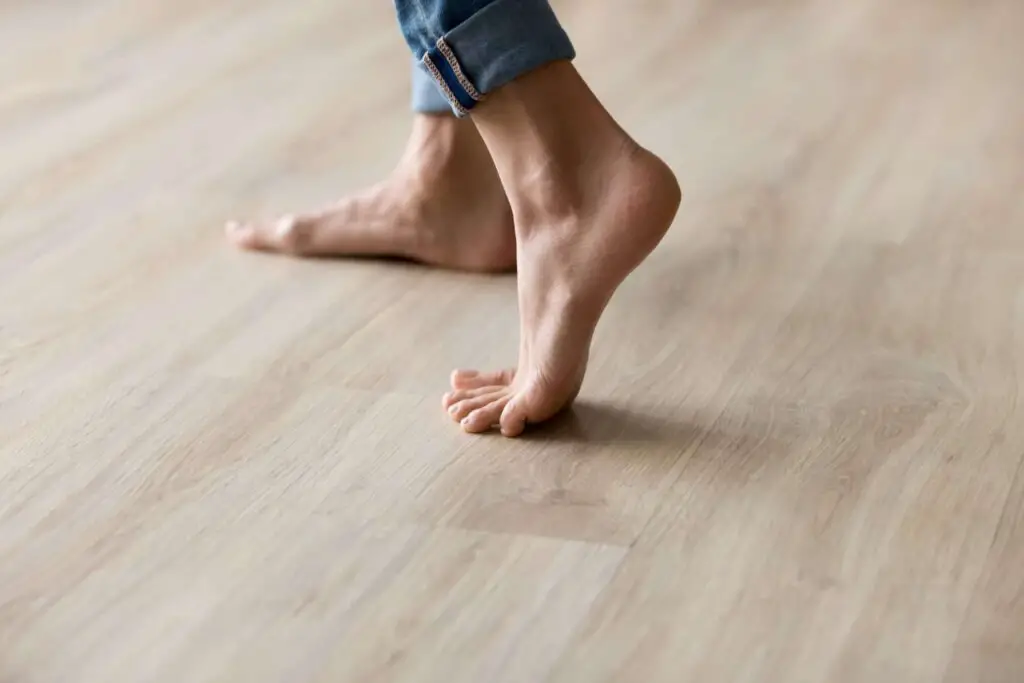Are you looking to match your existing flooring with something new, but don’t know where to start? Don’t worry matching flooring can be done easily when you know what you’re looking for. Keep reading to learn the tips and tricks for matching your flooring.
1. Consider Color & Style First

The first step in matching your flooring is to consider color and style. Do you prefer classic or modern styles?
Is the current look of your room warm or cool? You can find the flooring in a variety of colors, from light neutrals like beige and taupe to dark shades like navy and charcoal.
Whether your room is traditional or contemporary, there is most likely a corresponding style of flooring that will fit the look.
2. Determine Durability
Another factor to consider when matching flooring is durability. For example, if you are looking for an area of your house that experiences high traffic (e.g., kitchens, entryways) then you should opt for a type of flooring such as hardwood or ceramic tile that is more resistant to wear and tear.
This way, your floors will last longer even as they experience daily foot traffic.
On the other hand, if you are looking for more delicate areas (e.g., bedrooms) then vinyl or laminate may be better suited since they are softer underfoot and require less maintenance than other types of flooring materials.
3. Be Mindful Of Maintenance
Last but not least, it’s important to consider how much maintenance each type of floor requires before making a decision on which one to purchase.
For example, some types of wood floors require regular wax treatments while others need oil-based finishes applied every few years in order to retain their appearance over time.
Carpet may require regular vacuuming and shampooing while tile floors may only need occasional mopping with a mild detergent solution depending on the material used for its installation.
Knowing how much time and effort each type of floor requires will help ensure that your new floors fit within your lifestyle and budget needs before making a decision on which one is right for you.
Related Topic: What is Roll Flooring? Advantages & Disadvanatges
How to Identify Your Flooring?
Installing new flooring can be an exciting and rewarding home improvement project, but first, you need to know what kind of flooring you have.
Whether it’s hardwood, laminate, tile, or vinyl, there are a few steps that you can take to identify your flooring. Let’s take a look at how to do just that.
1. The Visual Test
The first step in identifying your flooring is the visual test. Look closely at your floors and see if they have any unique patterns or textures. This will give you an idea of the material that was used to make your floors.
For example, hardwood floors tend to have a smooth surface with wood grain patterns while tile floors often have geometric shapes and patterns. If you still can’t tell what type of flooring it is after doing the visual test, then you can move on to the next step.
2. Feel Test

The feel test is an easy way to distinguish between different types of flooring materials. Take off your shoes and feel around for any grooves or seams in the flooring.
Hardwood floors tend to be smooth with no grooves or seams while laminate planks typically come in long strips with small grooves between them.
Vinyl and linoleum usually have a softer texture than other types of flooring materials so they should be easy to identify by touch as well. If all else fails, then you can move on to the next step.
3. Check Labels/Stickers
If neither the visual nor feel tests work for you, then it’s time to check labels or stickers on your flooring for clues about what type of material it is made from.
Most modern-day manufacturers put labels on their products that detail what type of material it is made with as well as their installation instructions and warranties so keep an eye out for these labels or stickers when inspecting your floors.
Once you’ve identified what type of flooring it is, then you’ll be able to decide how best to proceed with either refinishing existing materials or installing something new altogether!
Bottom Line
Identifying your existing flooring doesn’t have to be a daunting task!
By doing a simple visual test, feeling around for any grooves or seams in the floor, and checking labels or stickers on the product itself, anyone should be able to easily determine what kind of material their floors are made from before deciding whether they should refinish existing materials or install something brand new!
Related Topic: What is LTB Flooring? Facts You Should Know!
Conclusion
Matching your existing floor with something new doesn’t have to be difficult! Start by considering color and style which type do you prefer? Then determine durability which type is best suited for high-traffic areas versus low-traffic areas?
Lastly, think about maintenance which typically requires less upkeep over time. Once these factors have been taken into consideration, finding the right match for your floors should be easier than ever!
Whether you’re going for classic elegance or modern minimalism, use these tips as a guide when searching for the perfect type of flooring for your home!
FAQs
Is there an app to match flooring?
Looking to match your flooring but unsure how? There are now plenty of apps available to help you out! Scanning a photo of your existing floor and following simple instructions should give you an exact match – no more guesswork is needed. Finding the perfect fit for your home is only a few clicks away.
Can Lowes match flooring?
Lowes has an impressive selection of flooring, but if you can’t find exactly what you’re looking for, their team can help.
Through Vendors Direct Match, Lowes offers a unique service in which they will search for a particular type of flooring at multiple vendors. If found, the product is then ordered and shipped directly to your local Lowes for convenient pickup.
With this service, customers are able to get whatever flooring is needed, ensuring it matches perfectly with a project.
How do you match discontinued flooring?
Replacing discontinued flooring requires some effort and research. First, search for stores that may still have the product. Contact construction companies in the area and inquire if they have any available. You might also try checking stores in other cities, as this could lead to success.
Lastly, looking online often yields results! With patience and dedication, you can find a discontinued flooring product that matches yours.


2 thoughts on “How Can I Match My Flooring? 3 Simple Steps”